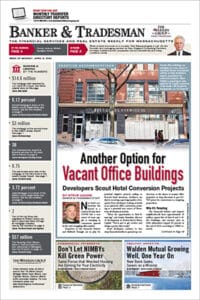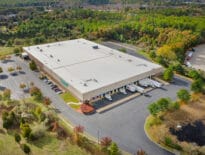
Doug Quattrochi
In our mission to create better rental housing, MassLandlords staff and members are evaluating heat pumps retrofits in multifamily properties. Our long-term goal is to eliminate greenhouse gas emissions from residential heating. While heat pumps are a very promising technology, we are far from certain on how and when to recommend retrofits to housing providers, for a few key reasons.
At a webinar presented on Feb.19, we unveiled our heat pump versus furnace calculator. This spreadsheet tool models a typical apartment, a typical natural gas furnace or boiler and a range of air source heat pumps. The method by which heat is delivered is modeled as a black box, meaning we can evaluate ducted, ductless, hydronic or other systems.
Operating Costs Not Easily Predicted
The tool clearly indicates that heat pumps can be cheaper to operate than natural gas, even with grid electricity, when appropriately sized and carefully selected. When coupled with local generation (e.g., solar), heat pumps quickly dominate natural gas on an operating cost basis. We have written about the opportunity to monetize this technology in the article “Can Massachusetts Landlords Charge for Solar?”
The tool also indicates pitfalls. Poorly chosen heat pumps will be more expensive to operate than natural gas, sometimes by a factor of two or three. This is particularly true when the heat pump chosen is not “cold optimized” (different from “cold rated”). Such heat pumps have a low heating season performance factor, or HSPF.
Our model will need to be further expanded to account for voids in insulation and air changes in leaky buildings. These can create significant penalties on operating cost. Owners considering retrofits would ideally know each unit’s air changes per hour as well as whether there are insulation voids. Either of these could swing the math to make heat pump retrofits infeasible without further air sealing and insulation.
Installation Costs Site-Specific
On top of operating costs, we also need to understand installed costs. Developers have construction cost estimators for new construction. Insurers have replacement cost standards for post-casualty rebuilds. But for landlords with preexisting multifamilies, it takes a local effort to know how or even whether to attempt a retrofit.
Here we cannot treat the heat delivery method as a black box. We need separate models for ducted, ductless, and hydronic systems. Hydronic retrofits, for instance, are subject to a hard cut-off: whereas a typical boiler or furnace outputs hot water at 180 degrees Fahrenheit, hydronic systems typically output no more than 130 degrees, and may be underpowered for existing baseboards.
Regardless of the delivery method, the “back of the envelope” math leaves no margin for error.
A typical apartment furnace or boiler will be installed for around $5,000 per unit. It will last for 15 to 30 years with maintenance. A typical heat pump will be installed for roughly $10,000 per unit. It will last for 10 to 15 years with maintenance. Obviously, the exact prices can be higher or lower, and the service lives can be longer or shorter. But the general sense, at time of writing, is that heat pump retrofits are a heavy lift.
Upkeep, Environment Costs High
The state sanitary code explicitly places the responsibility for maintaining heating systems on the landlord. This means every part of the heating system.
In the case of ductless mini-splits, this means cleaning the in-unit filters. Landlords do not want to be climbing over beds and furniture to clean filters. Renters do not want landlords in their homes in this way, either.
A second cause for concern is plumbing. Where there is plumbing, there are leaks. Seattle has found that pretty much every unsoldered refrigerant fitting leaks. Some refrigerants grease up walls, but many varieties used in heat pumps evaporate into the atmosphere. The common HFC-134a refrigerant is 3,710 times more harmful as a greenhouse gas than carbon dioxide on a 20–year basis. The math works out to mean that a 10 percent annual recharge will be roughly as bad as if we had stuck with natural gas in the first place. New, less harmful refrigerants exist and should factor into decisions.
New Construction Points the Way
Mini-splits leak. Ducted systems are expensive. Hydronic systems may be underpowered. Heat pumps are a minefield for the uninitiated retrofitter.
But setting retrofits aside, we can draw inspiration from the heat pump nirvana that is new construction. Forget natural gas, heat pumps and local solar offer the full package: heating, air conditioning (a killer amenity), filters accessible in the basement rather than in-unit, a minimum of refrigerant lines and fittings to leak, zero carbon emissions, zero operating cost, zero permission needed from the gas company as hookup moratoriums loom over parts of the state and zero carbon pricing risk. We can do this.
But how best to retrofit? We welcome experience and guidance in any direction: collaborations on public policy, recommendations on specific systems or technologies and stories about how a retrofit may have gone well or poorly. Help us create better rental housing by emailing us at hello@masslandlords.net.
Doug Quattrochi is executive director of MassLandlords, Inc.






